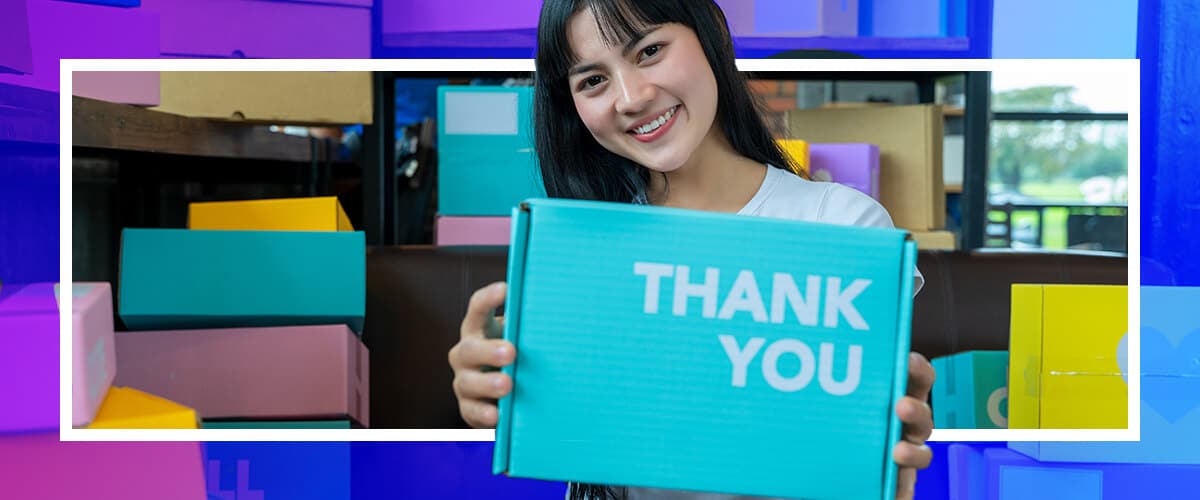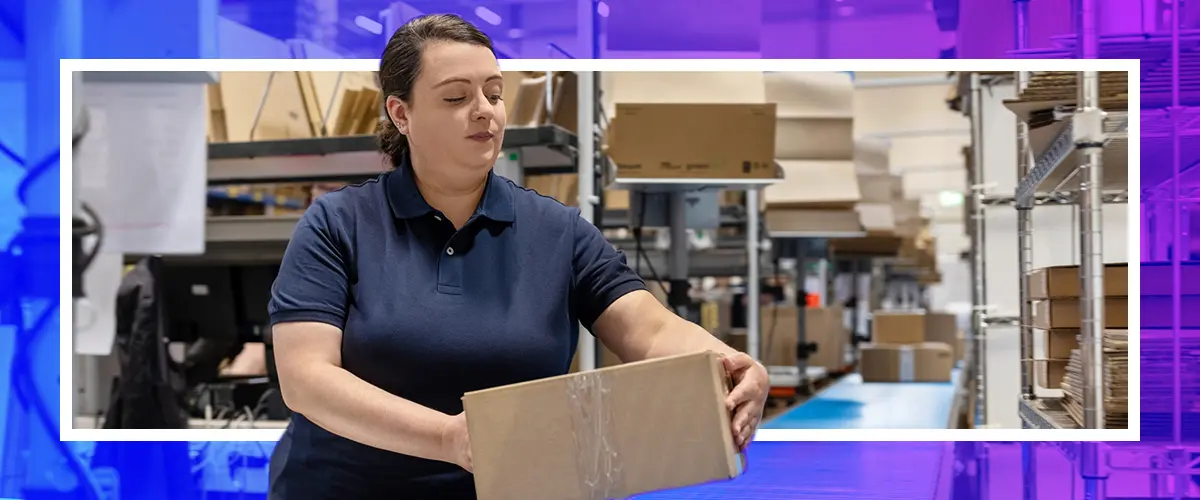Companies that invest in the fulfillment process can boost the customer experience. In fact, a McKinsey study found that customers are willing to pay more for accelerated delivery and effective shipping execution. By meeting customer needs, you may see a boost in customer loyalty and repeat business.
Contents
- The impact of fulfillment on customer experience
- Key warehouse fulfillment processes that directly affect customer loyalty
- The role of technology in optimizing fulfillment
- Enhancing customer experience through personalization
- Building long-term customer loyalty through excellent fulfillment
- A solid fulfillment experience enhances the customer experience
- FAQs about boosting customer satisfaction
The impact of fulfillment on customer experience
More and more, customers want to buy online. The ease of online purchases — no lines, pushy salespeople, or drive to the local store — makes them attractive to busy consumers. However, just because a customer doesn’t visit your physical storefront doesn’t mean they don’t expect a pleasant shopping experience. Aside from the product itself, the fulfillment process plays a significant role in order accuracy and customer satisfaction in three ways.
Timely delivery
Customers don’t want to wait days or weeks for the product they ordered. Nearly 70% of customers expect a two-day turnaround. If a company can’t meet that expectation, customers are less likely to shop there again. By offering same-day or two-day delivery, your company elevates its service to meet customer demands.
Transparency and real-time tracking
Another fulfillment aspect that impacts the customer experience is whether your store offers real-time tracking. Transparency and visibility into the shipping process reassure customers that their order isn’t lost somewhere in cyberspace. Instead, real people are taking action by picking the product, packaging it, and shipping it to them.
Packaging and presentation
Products can easily become damaged during shipping, especially when not adequately secured. Including the right packing materials to prevent damage ensures your customers receive a whole product, reducing the risk of returns. You can go the extra mile by including a personalized message or brand packing materials reminding clients of where they shopped.
Key warehouse fulfillment processes that directly affect customer loyalty
Several fulfillment processes directly impact the customer experience. Improving these processes can reduce the risk of delivery mistakes, customer frustration, and product returns.
Order accuracy
Fulfillment centers are typically massive spaces and may contain thousands of products. Every day, fulfillment associates sort through items to find the correct orders and package them for shipping. However, it’s easy for an associate to make a mistake. Their error can result in a mis-pick, harming customer trust and leading to costly returns. Investing in a warehouse management system (WMS) that includes barcode scanning and accuracy checks can reduce picking errors.
Inventory management
Paying for a product — then finding out it’s unavailable — will frustrate any customer. Ecommerce businesses can avoid stockouts, backorders, and cancellations with proper inventory management. A WMS that uses real-time data to forecast customer demand and track current inventory allows ecommerce stores and fulfillment centers to make more informed inventory decisions.
Returns management
No ecommerce store is immune to returns. Customers may decide to return an item for many reasons — receiving the wrong product, a bad fit, or because it didn’t live up to expectations. An efficient return process can ease customer frustrations and boost brand trust. For instance, implementing robotics systems can streamline the return sorting process for large fulfillment centers.
The role of technology in optimizing fulfillment
There are many solutions for organizations struggling to optimize their fulfillment processes.
Warehouse management systems (WMS/FMS)
Many warehouses rely on a traditional WMS to track inventory, expedite picking and packing, and fulfill orders accurately. However, an older WMS may be limited to the individual fulfillment center’s operations. While integrations can improve its capabilities, a fulfillment management system (FMS) offers enhanced visibility.
With an AI-powered FMS like Logiwa IO, organizations can optimize inventory and shipping processes across all locations. The system automatically passes orders to the fulfillment center with the shortest delivery times and available inventory, reducing shipping delays and enhancing order accuracy.
Predictive analytics
Customer demand can change on a dime. That puts organizations still using manual tracking systems to monitor inventory and anticipate future orders at a disadvantage. By incorporating Logiwa analytics, which offers real-time data tracking, customizable reports, and demand forecasting, warehouse managers can optimize stock levels for future orders.
Omnichannel Fulfillment
Many retailers provide online and in-store shopping experiences. Fulfillment centers that support both operations may better meet customer expectations by monitoring current inventory levels and projecting demand to prevent stockouts.
Enhancing customer experience through personalization
When customers order online, they forego the experience of entering a store, browsing products, and talking with salespeople. Providing a positive purchase experience relies almost entirely on fast shipping, order accuracy, and a product that meets expectations. However, savvy retailers can enhance online customer relationships through personalization.
Customized packaging
What’s more exciting: opening a brown box with a single product inside or finding small, unexpected finishing touches, like a thank-you note or creative packaging? It’s likely the latter. Including something extra to connect with customers and enhance brand awareness helps strengthen customer bonds and loyalty.
Tailored Communication
Customers want to know you received their order and are taking action. Providing real-time tracking details and customized order updates enhances the customer experience. You may go the extra mile with specialized shipping options, like delivering packages within a specific time window or to a particular area on the customer’s property.
Unlock a personalized tour of Logiwa IO
Building long-term customer loyalty through excellent fulfillment
As online retail competition builds, developing loyal customer relationships is more important than ever. Otherwise, customers won’t have a reason to stick with your store. Some ways you can enhance long-term customer loyalty include:
Meeting expectations consistently
Customers who shop with you for the first time may not know what to expect. You can gain their trust by providing quick delivery times, no-fuss order updates, and personalized communication. If they aren’t happy with your product, offering an efficient return system can go a long way toward securing a future order.
Incentivizing loyalty
Many brands use loyalty systems to develop long-term customer relationships. You might encourage loyalty through fulfillment by offering free shipping to returning customers or faster delivery options.
Customer feedback loops
One of the best ways to learn what customers think of the purchasing and fulfillment process is to ask. Encourage clients to share their thoughts about their experiences and respond to actionable advice. When customers see you care about their insights, it may increase their loyalty to your store.
A solid fulfillment experience enhances the customer experience
Ordering online means customers don’t get a chance to interact with your brand personally. However, you can foster a relationship by offering a superior fulfillment experience that gets products to them quickly, avoiding order inaccuracies and shipping delays.
By optimizing your fulfillment processes, you can build customer loyalty and long-term success. To learn more, schedule a call with a Logiwa fulfillment specialist.
FAQs about boosting customer satisfaction
How can organizations optimize warehouse fulfillment for customer loyalty?
Customers who purchase online expect fast delivery and consistent order updates. Utilizing a comprehensive WMS/FMS that identifies fulfillment centers with the quickest delivery times and available inventory can expedite shipping times, keeping customers happy. An FMS that includes order accuracy and inventory management tools help avoid mis-picks and stockouts. Logiwa IO provides a comprehensive FMS that’s ideal for companies with multi-warehouse operations.





